Ssahs Eastwood-Bennitt manages the library and teaching resources at Manchester Street School in Feilding, Manawatu. She is also part of the group of literacy experts who arrange the ReaLM professional development programme each year.
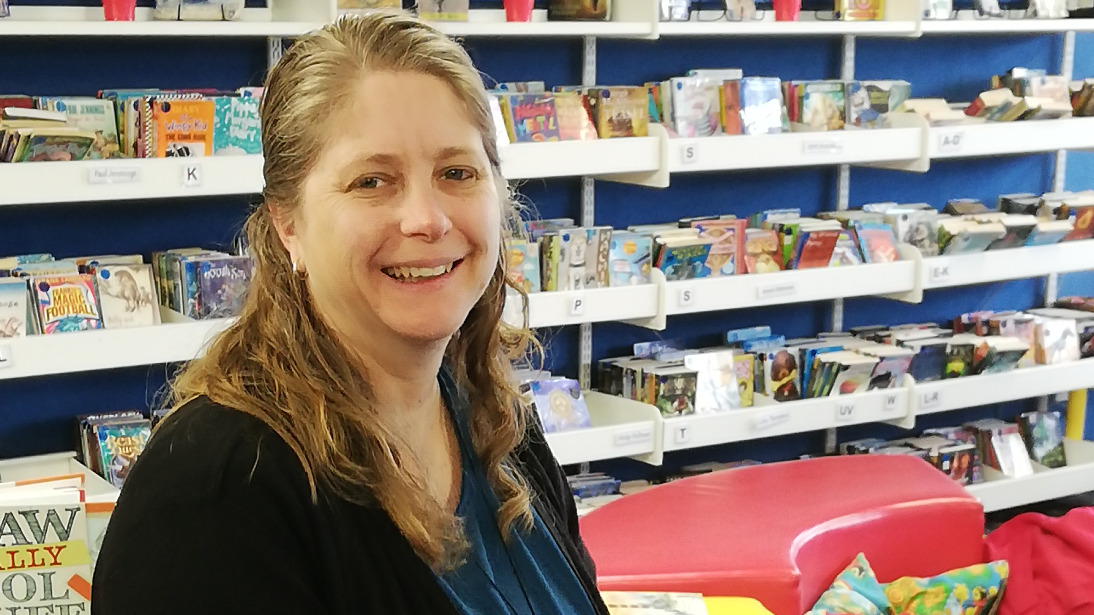
I manage the library and teaching resources at Manchester Street School (in Feilding, Manawatu) which is a Decile 6 contributing school (Years 0-6), and has a role of 400. I am employed for 20 hours a week during term time. This term marks my 10 year anniversary working here at MSS.
Prior to this I had been working at National Library of New Zealand in Palmerston North firstly as a Circulation Assistant within the Services to Schools area then in the Print Disability Services as a Library Assistant. I was made redundant when Print Disabilities Service was moved down to Wellington. After a few months being an at home solo mum of three I was ready to be back earning my own money to better support my wee family of four. The opportunity to apply for my current position was pointed out to me and encouraged by friend and ex National Library colleague Jan Watts who was (and still is) an inspirational mentor for me in this role. As a School Library Advisor Jan was integral in helping me develop a lifelong passion for reading into a knowledgeable passion for literacy and libraries.
I tell my student librarians that this is a dream job and that one of my fondest childhood memories is making library cards and sticking pockets into my books and issuing them to the toys of the house so the force was already strong within me.
…one of my fondest childhood memories is making library cards and sticking pockets into my books and issuing them to the toys of the house…
I have also been a committee member of Central Region SLANZA since 2009 and am a founding member of the organising committee of ReaLM – Reading & Literacy in Manawatu. These groups allow me to network with my library peers (tapping into their extensive knowledge), share my passion for bringing authors in front of students to ignite a literacy spark and access professional development to continue my journey as a lifelong learner.
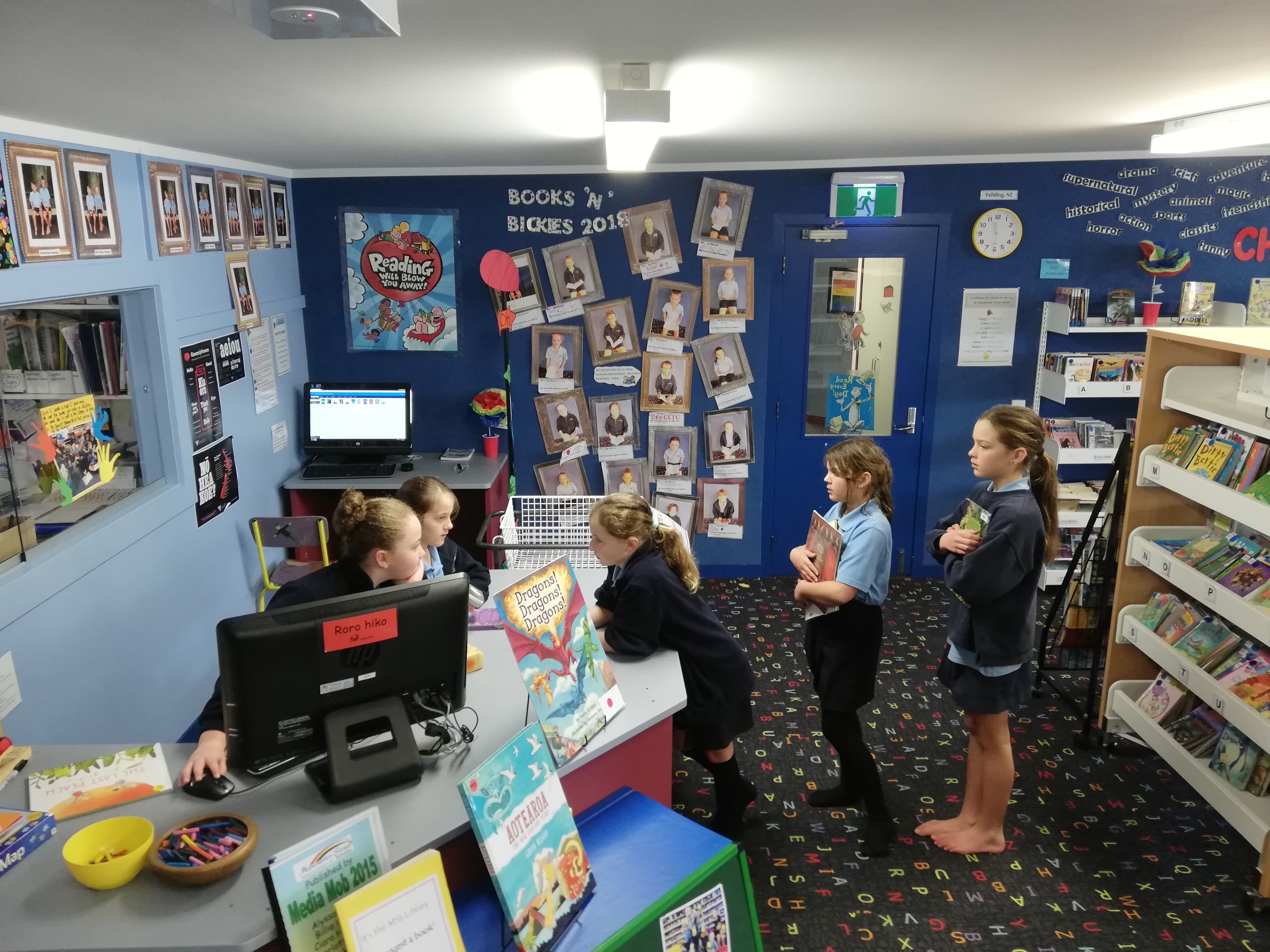
Reading as foundation of a healthy, responsible citizen
I love reading, I love the different worlds and experiences it gives me, I love that every time I read I am learning something (sometimes without even realising), be it a new word, a new name, a new place, a new genre, a different way of seeing the world or a different way of feeling. I love being moved by a story. To me that is literacy and I love that as a school librarian I am an agent of influence introducing and sharing the love of reading with others especially our students.
Literacy ignites imagination and inspires learning; oral, written, visual: it all counts.
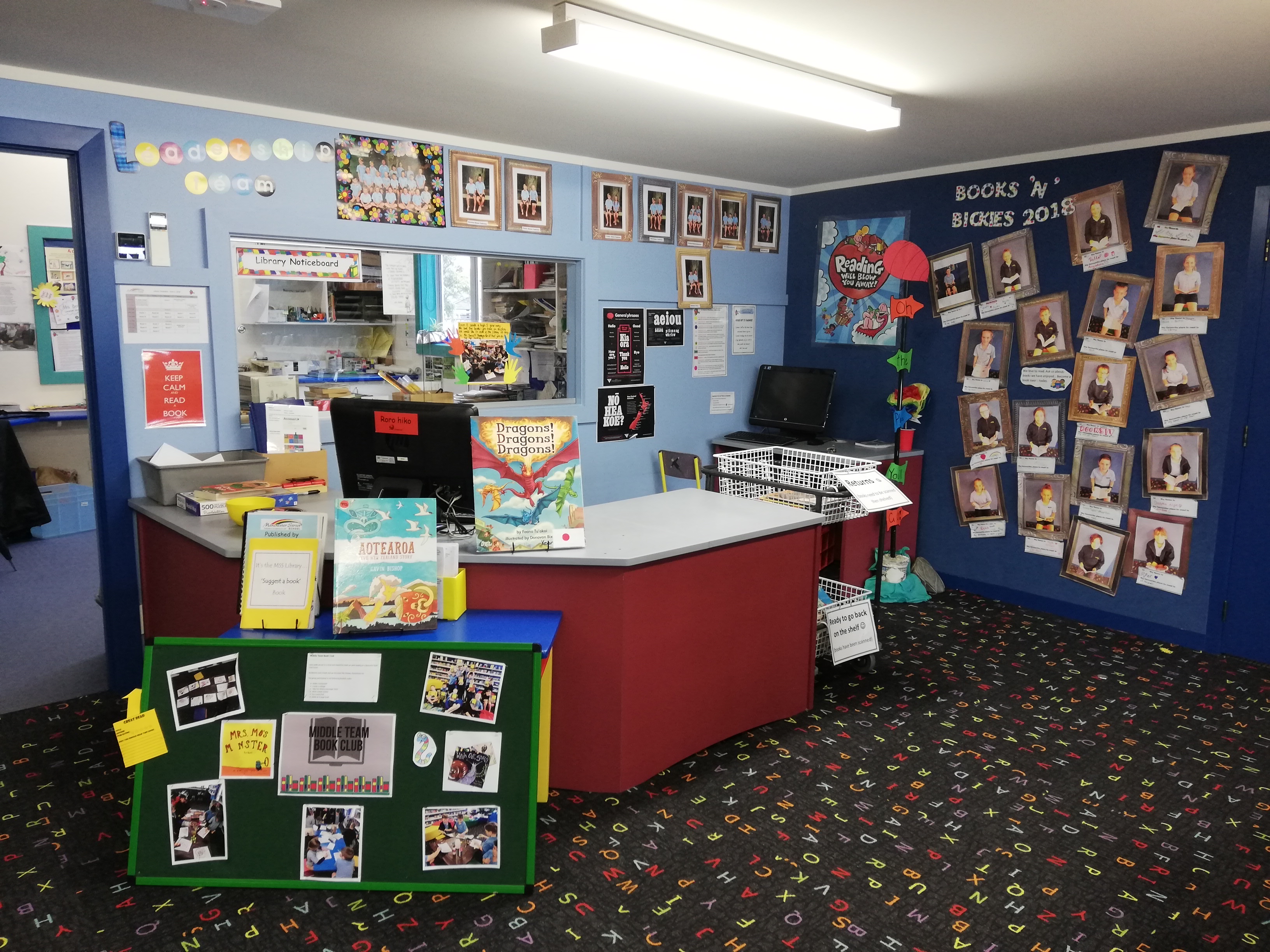
I am a strong believer that both oral and written words are the foundation of and an important building block for, a healthy, responsible citizen and therefore a fair and educated society. We have been sharing stories and knowledge since we learned to communicate and then we learnt to write, using scrolls, then books and now other technology has allowed us to record our tales both imaginary and factual. It’s exciting to be a member of a group who curates and shares these stories.
I am a strong believer that both oral and written words are the foundation of and an important building block for, a healthy, responsible citizen and therefore a fair and educated society.
We know children are sponges for knowledge and learning, and language is the way we saturate them. Regardless of where technology leads us, learning will always be our drive and I believe that literacy is the way children develop and share their imagination, and continue their passion to learn. One of my favourite parts of my job as a librarian (and as a parent) is reading aloud to ‘my’ students and my children and having them want more; another picture book, the next chapter, ‘one more’ poem. Seeing them excited about reading, about their literacy is my buzz.
A typical day, that rare beast
My day is driven by the demands of ‘my’ students and colleagues and so changes to meet those needs. On a basic level I turn on the library workroom and the library computers. I do a quick tidy of the library and most mornings discover books left on my workroom chair that need my attention for various reasons. I have until morning tea at 10.40am to get cataloguing, and other essential daily library admin jobs done uninterrupted before classes come in at 11am.
Every class (currently 17) has a weekly library time slot of at least 30 mins. During these times I regularly: showcase new books; promote our current reading incentive programmes; run information skills sessions; and I am available to students who may require my help finding books for reading and projects, as well as supervise student librarians return and issue books.
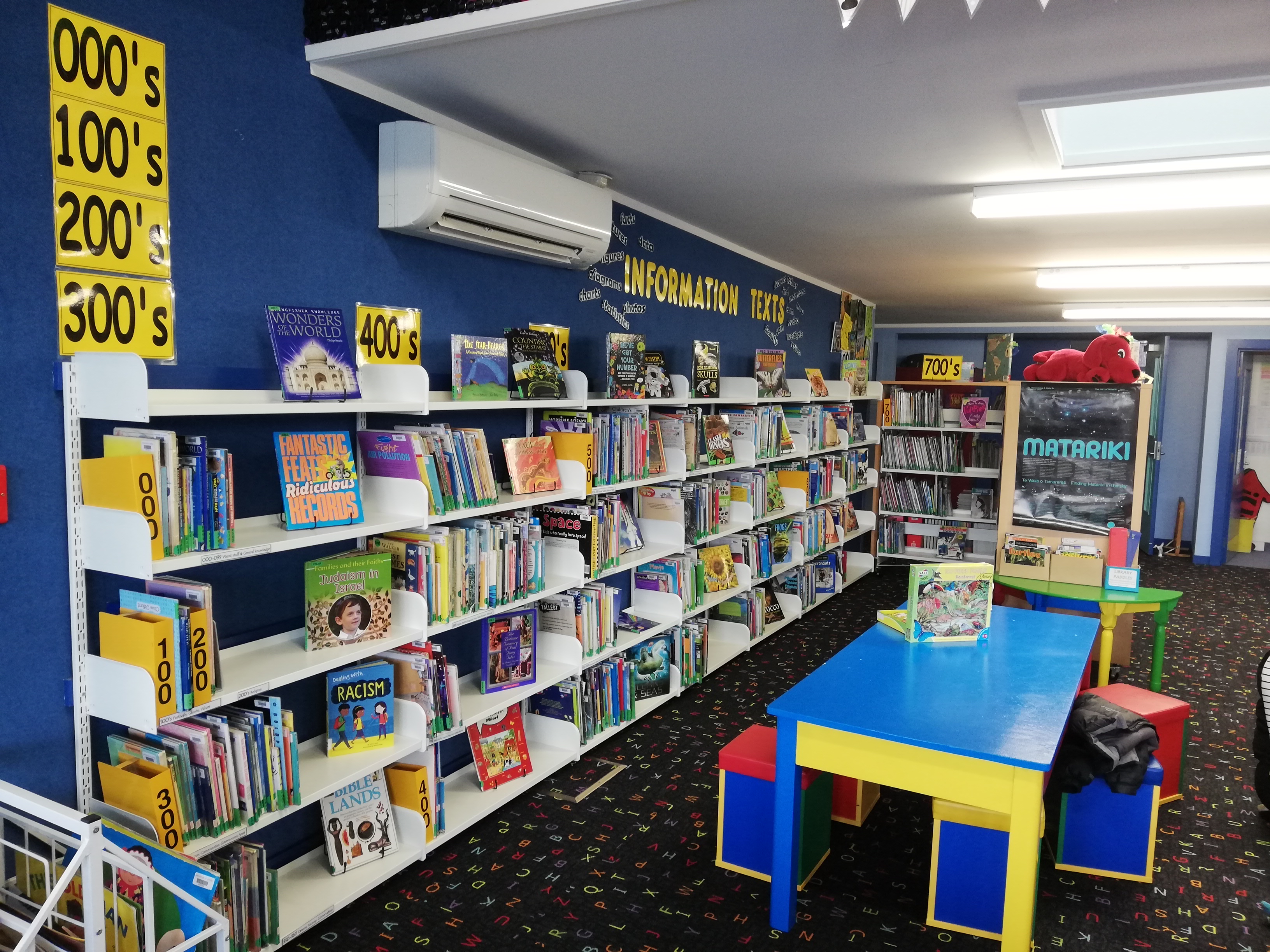
Lunchtimes are my ‘duty’ time and are usually spent processing books whilst supervising student librarians as they run activities/games or read to others; and I am available to check off reading incentive programme progress with students. The bell goes and it’s general tidy up time in the library and my workroom before I finish for the day at 1.30pm
A Library refit: a welcoming learning space
In 2016 we had the opportunity during a remedial building project of the administration block to do a refit of our library. Our brief was to create a welcoming, fun, vibrant and flexible learning space.
We already had front facing fiction, which had significantly upped our issues increasing our students reading mileage, but it was great to have shelves specifically designed for this purpose. Apart from the shelves attached to the walls all our other shelf units and furniture is movable, with limited withdrawal space for group or one on one work, we needed a flexible space within our school.
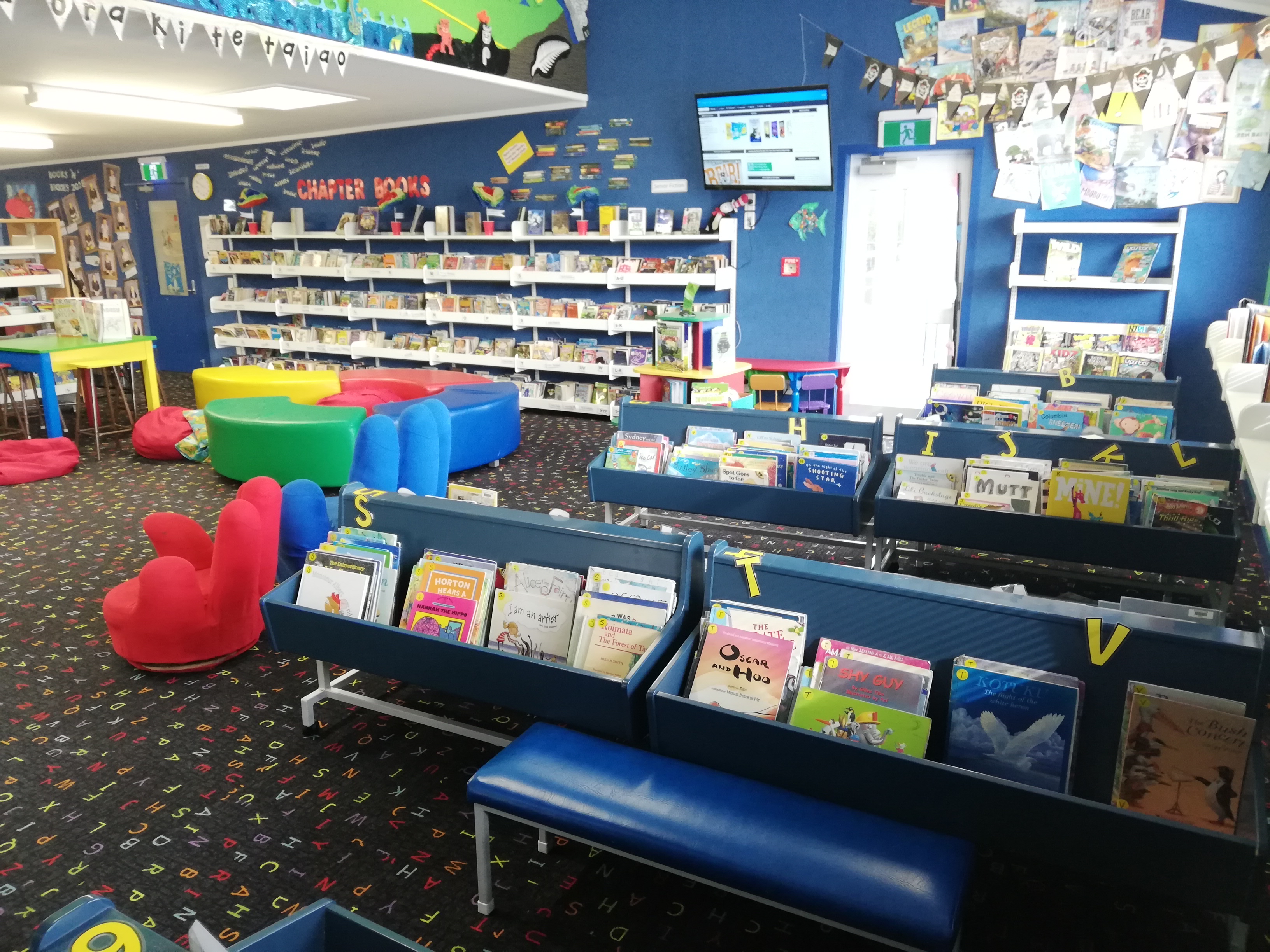
In our Information Texts section we have kept with the traditional spine out and dewey decimal system as we think it’s important to be consistent with the other schools that our students will transition to. The earlier they are familiar with this system the less daunting and easier it will be for our students to use libraries as lifelong learners, and it’s a great way to teach numeracy and decimals in a practical space outside of the classroom. This supports our school wide ‘Switched on to Learning for Life’ philosophy.
The cushion covers are made from the old library curtains, we have started filling the bean bags with foam chips so they keep their shape better, and the picture book bins were donated by our local public library. The funky alphabet carpet tiles are a great and engaging element.
The screen is another exciting feature, we have recently purchased Chromecast enabling it to be utilised in a more interactive way, and with our four library based iPads we are bringing our library into the digital age.
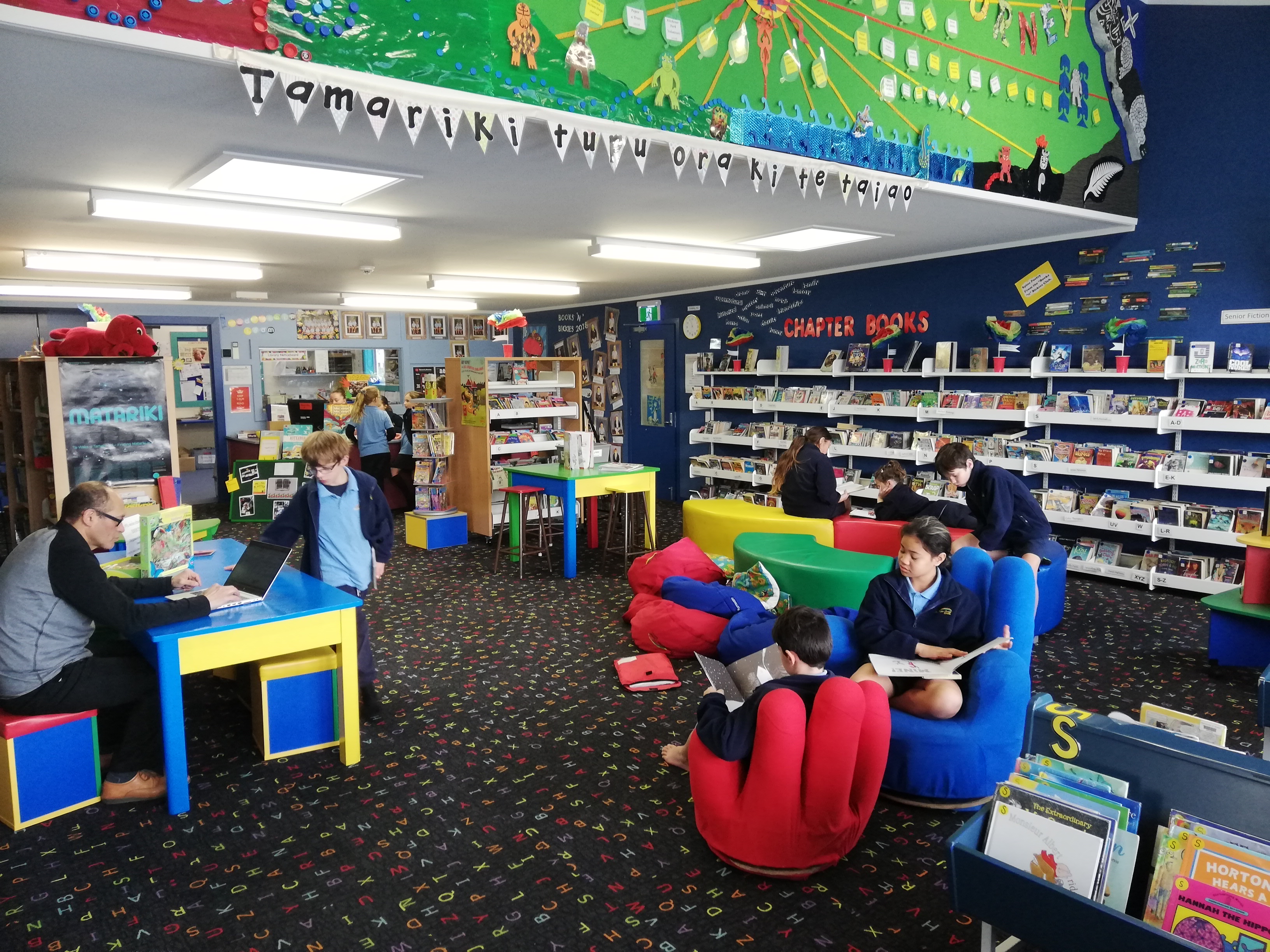
Pizza, free books and Bingo: creating readers
IOne of the fundamental aims of our school library is to increase the reading mileage of our students and so I have run several different types of reading promotions over the years. The ‘coffee card’ promotion where students read 10 books and get a free book, the Hells Pizza reading challenge is always a popular one (food is a great incentive), this year I took an idea from the school library listserv creating Reading Bingo cards – first book read get a bookmark, fifth book read pick a lucky dip, complete the ninth square and you get a book of your choice presented to you at the next full school assembly, but I think the most successful reading promotion in our library is our New Book stand.
14-16 newly processed books go on the stand, these books are also showcased as a carousel on our AccessIt library homepage, they are read and promoted by myself and the teachers, they can’t be issued for the time they are on the stand (usually a week) BUT they can be reserved and this creates such a buzz. Then students realised they could reserve a book a classmate had issued!! I am currently inputting 10-20 reserves a day.
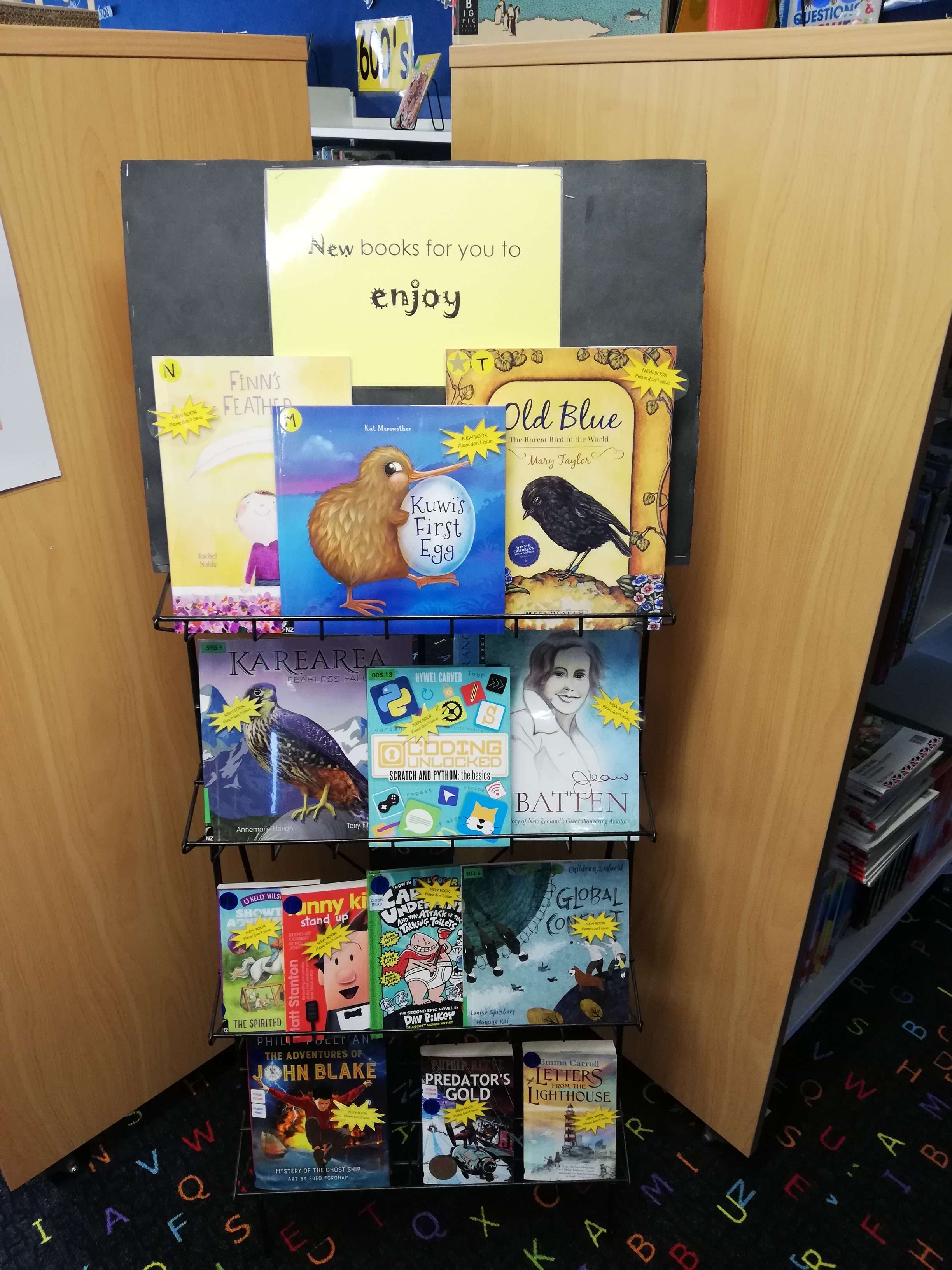
If I had the ear of publishers as a librarian of Years 0-6 students, I would lobby for more junior fiction, easy to read/beginning chapter books. Books to transition the reader from picture book to chapter book. Books to encourage students to read-to-self. Books to entrench and further develop the language our junior students are learning in their instructional reading. Books to capture students imagination developing a love of reading.
If I had the ear of publishers as a librarian of Years 0-6 students, I would lobby for more junior fiction, easy to read/beginning chapter books
The value of Graphic Novels and Comics
I can’t think of a certain book I have ‘preached’ about but I have been quite persistent about championing the value of Graphic Novels and Comics to ‘non-believers’ (both students and teachers). I grew up loving Asterisk and Tin-Tin and never saw them as second rate but as just a different way to ‘read’. To me mixing both visual and written literacy is a win for every reader. It’s an art to convey so many different emotions using both formats and I like to think that having to read ‘between the pictures’ requires different parts of the brain to be working at the same time – how can that be a bad thing?
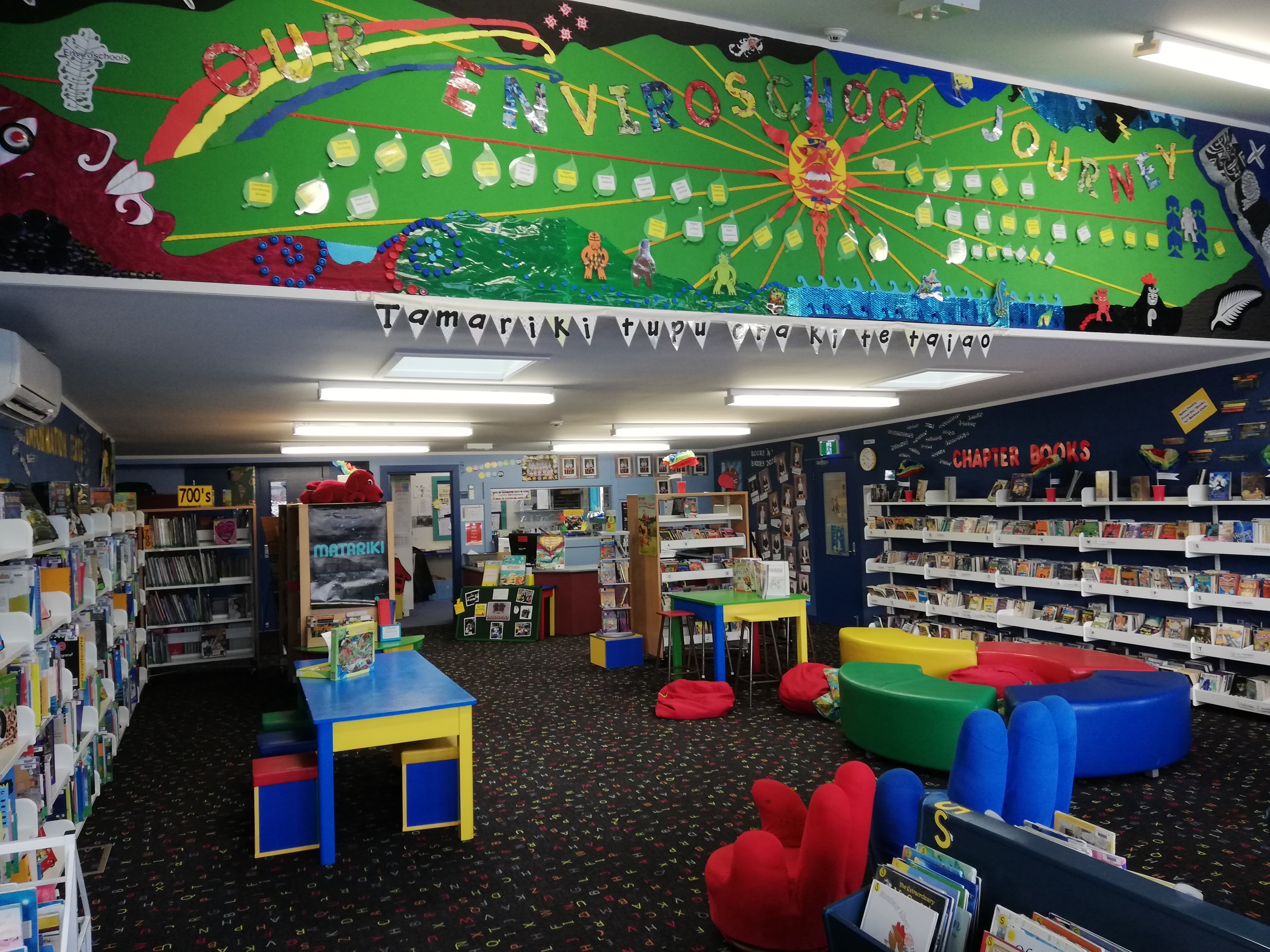
I am always pleased and excited to see a new graphic novel book or a classic retold as a graphic novel and I love showing the ones I purchase or lend through the National Library to ‘my’ students and fellow staff. Recreational reading is an important part of literacy, so we should be encouraging all the ways we can to excite a student about their reading.
Sasha Eastwood-Bennitt
Sasha Eastwood-Bennitt is the Library and Resources Manager at Manchester Street School in Feilding. She has previously worked for the National Library School Services Team and Disability Services Teams. She has been a committee member of Central Region SLANZA since 2009 and is a founding member of the organising committee of ReaLM - Reading & Literacy in Manawatu.



